

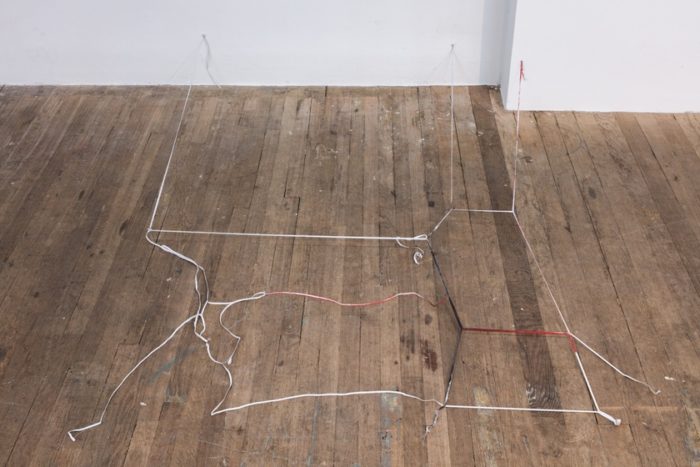

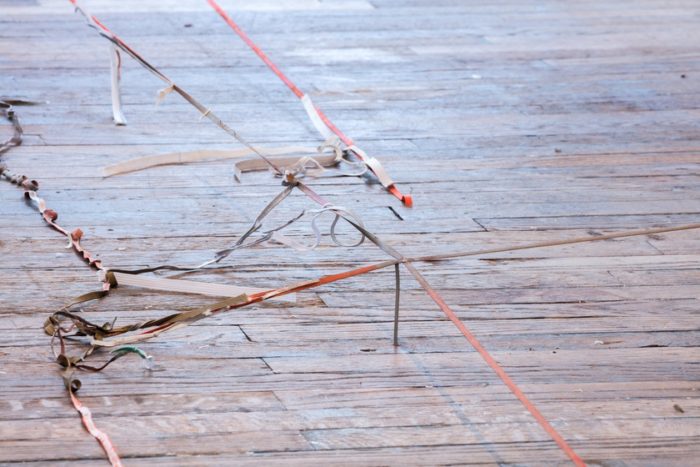
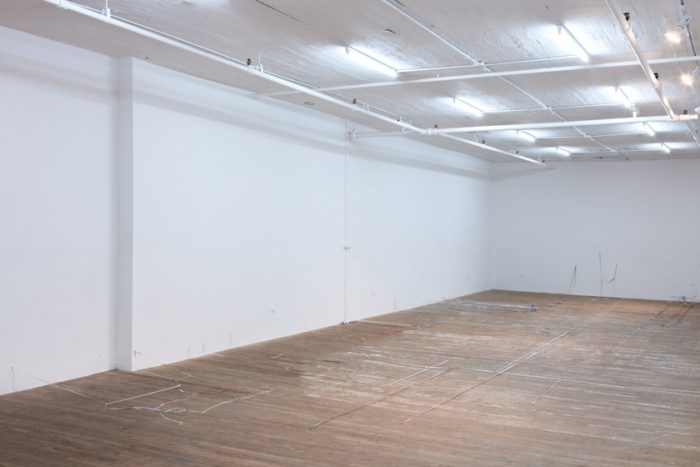
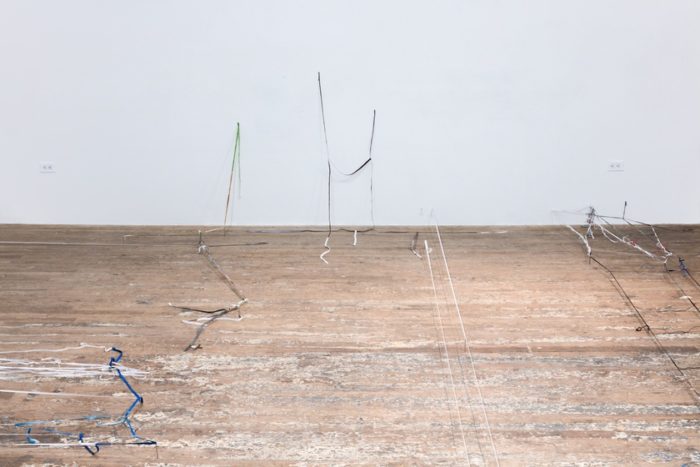


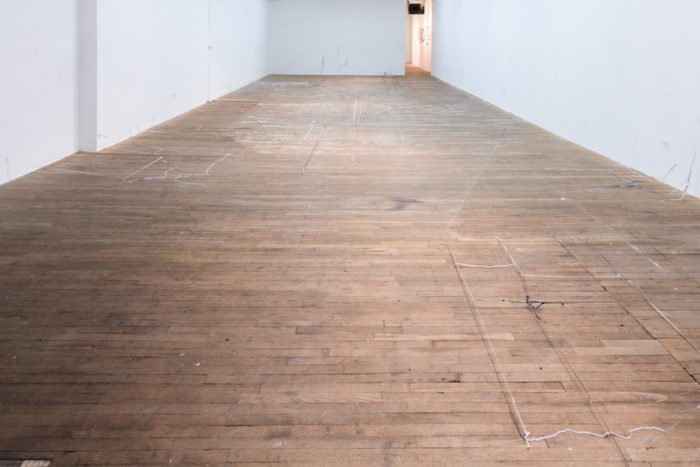
Olga Balema: brain damage at Bridget Donahue
May 25–July 26, 2019
PR: brain damage is a show of new elastic works by Olga Balema that is 100% sculpture. Thin elastic bands, at times painted, are suspended above the floor by nails, as well as stapled into the ground and walls. The show deals in the most general and modest artistic concerns. As always with the artist, this is a new direction, but not necessarily progressive—more like a sum total of propositions tallied somewhere nonmaterial. The title seems to be a reference to the work’s literal resemblance of a nervous system, but most likely to relegate that comparison to a flat image rather than a theme. The works are definitely reduced, but not minimal. Minimal would deal in absolute terms (tautness, un-tautness etc), not in bizarre numbers like 73, or other such numbers. Also, these discrete sculptures are themselves truly flexible, having full dynamic existences: rehearsed in the studio, in transit, and performed here in the gallery. Ultimately all legitimate configurations in their own right, their literal points of connection are mostly unchanged in each situation. This might all seem very obvious, and it is. I personally think there is a conspiracy against the obvious concerning artmaking—that significance is made up, not discovered. In other words, this form wasn’t about to be discovered by someone else.
– text by Bradley Kronz
Olga Balema (b. 1984, Ukraine) is an artist living and working in New York. She received her MFA in New Genres from UCLA and subsequently attended the Rijksakademie as a resident, as well as Skowhegan. Balema is the 2017 recipient of a Pollock-Krasner Foundation Grant. She has participated in national and international group exhibitions in venues including Haus der Kunst, Munich (2018); Kunstmuseum St. Gallen, Sankt Gallen (2018); High Art, Paris (2017); Croy Nielsen, Vienna (2017); Moderna Museet, Stockholm (2016); and in exhibitions including The Baltic Triennial 13, Vilnius (2018); 2015 Surround Sound Triennial, New Museum, New York (2015); and is a participant in the 2019 Whitney Biennial, Whitney Museum of American Art, New York. Balema has held solo exhibitions at venues including Hannah Hoffman, Los Angeles (2017); Swiss Institute, New York (2016); and Kunstverein Nürnberg, Nürnberg (2015).
